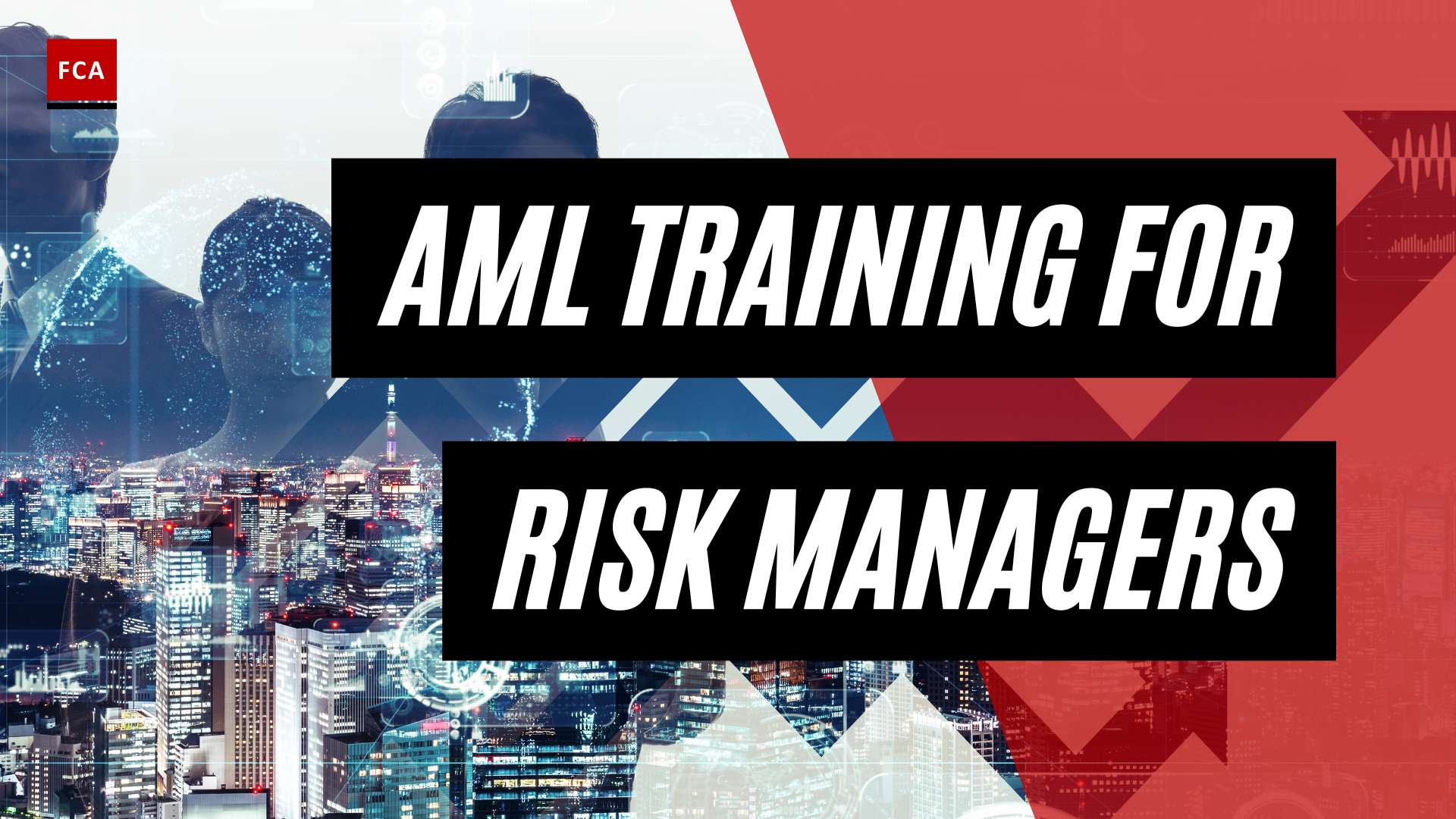AML Regulation for Stablecoins
As stablecoins continue to gain popularity, governments and financial institutions worldwide are recognizing the need for robust anti-money laundering (AML) measures to address potential risks. AML compliance plays a vital role in ensuring that stablecoin transactions are transparent, traceable, and compliant with existing regulations.
Understanding AML Compliance for Stablecoins
Navigating the regulatory landscape for stablecoin transactions requires a clear understanding of evolving AML compliance requirements. Regulators are implementing stringent measures to combat money laundering and terrorist financing, given the increasing adoption of stablecoins in financial transactions.
To comply with AML regulations, stablecoin issuers, exchanges, and other involved parties must establish effective AML programs. These programs should include comprehensive policies, procedures, and controls to detect and prevent illicit activities.
A risk-based approach is crucial in AML compliance for stablecoins. This involves conducting thorough risk assessments to identify and mitigate potential money laundering risks associated with stablecoin transactions. By assessing the specific risks involved, entities can tailor their AML measures accordingly and allocate resources effectively.
Importance of AML Regulations in Cryptocurrencies
The implementation of AML regulations in cryptocurrencies, including stablecoins, serves several important purposes. Firstly, it helps to safeguard the integrity of the financial system by preventing money laundering and terrorist financing activities. By ensuring that transactions are traceable and transparent, AML regulations contribute to the overall security and stability of the cryptocurrency ecosystem.
Secondly, AML regulations instill confidence in users and investors, enhancing trust in stablecoins as a reliable means of value transfer. By adhering to AML requirements, stablecoin issuers and exchanges demonstrate their commitment to upholding high standards of compliance and protecting their users from illicit activities.
Furthermore, AML regulations promote the wider adoption of stablecoins by traditional financial institutions. As stablecoins bridge the gap between traditional and digital finance, AML compliance becomes a critical factor in gaining regulatory approval and establishing partnerships with traditional financial entities.
By embracing and implementing AML regulations, the stablecoin industry can foster a more secure and trustworthy environment. This, in turn, paves the way for continued growth, innovation, and integration of stablecoins within the global financial landscape.
To learn more about AML regulations in cryptocurrencies and other related topics, you can explore our articles on cryptocurrency AML compliance, cryptocurrency transaction monitoring, and cryptocurrency KYC requirements.
AML Requirements for Stablecoin Transactions
To ensure compliance with Anti-Money Laundering (AML) regulations, stablecoin transactions must adhere to specific requirements. These requirements involve adopting a risk-based approach, conducting customer due diligence, and implementing Know Your Customer (KYC) procedures. Let’s explore each of these aspects in detail.
Risk-Based Approach in AML Compliance
When it comes to AML compliance for stablecoins, a risk-based approach is crucial. This involves conducting comprehensive risk assessments to identify and mitigate potential money laundering risks associated with stablecoin transactions. By understanding the unique characteristics and risks of stablecoins, organizations can develop tailored AML measures that effectively address these risks.
A risk-based approach allows organizations to allocate their resources more efficiently by focusing on higher-risk transactions and customers. It involves establishing robust transaction monitoring systems, implementing thorough customer due diligence procedures, and ensuring adequate suspicious activity reporting mechanisms are in place. By continually assessing and adapting their AML measures, organizations can effectively combat money laundering risks in stablecoin transactions.
Customer Due Diligence for Stablecoins
Customer due diligence is a critical component of AML compliance for stablecoin transactions. It involves verification of customer identities and an assessment of associated risks in each customer relationship. Organizations must establish robust procedures to verify the identity of stablecoin users and assess the risk level associated with their transactions.
To effectively conduct customer due diligence, organizations should implement stringent identity verification procedures. These may include collecting and verifying customer identification documents, conducting background checks, and employing risk-based approaches to determine the level of due diligence required for different types of customers. By conducting thorough customer due diligence, organizations can better understand their customers and identify any potential money laundering risks.
KYC and Documentation in Stablecoin Transactions
KYC procedures are an essential part of AML compliance in stablecoin transactions. KYC, or Know Your Customer, refers to the process of verifying the identity of customers and obtaining relevant information to assess the risk associated with their transactions. KYC requirements help organizations ensure that they are dealing with legitimate individuals or entities and enable them to monitor and report any suspicious activities (Doubloin).
In stablecoin transactions, KYC procedures involve capturing and documenting transactional activities to effectively track transactions and maintain compliance documentation. Organizations should establish clear policies and procedures for KYC, outlining the required information and documentation that customers must provide. This may include personal identification documents, proof of address, and additional information depending on the risk level associated with the transaction.
By implementing robust KYC procedures and maintaining comprehensive documentation, organizations can enhance their AML compliance efforts and contribute to the overall integrity of stablecoin transactions.
In summary, AML requirements for stablecoin transactions involve adopting a risk-based approach, conducting customer due diligence, and implementing KYC procedures. These measures help organizations identify and mitigate money laundering risks associated with stablecoin transactions, ensuring compliance with AML regulations. By adhering to these requirements, organizations can contribute to a safer and more secure environment for stablecoin transactions.
Regulatory Landscape for Stablecoin AML
As the popularity of stablecoins grows, governments and financial institutions worldwide are recognizing the importance of robust anti-money laundering (AML) measures to address potential risks. AML compliance plays a vital role in ensuring that stablecoin transactions are transparent, traceable, and compliant with existing regulations (Doubloin).
Government and Financial Institutions’ Recognition
Government bodies and financial institutions have increasingly acknowledged the need for AML regulations specific to stablecoins. They recognize the potential risks associated with these digital assets and the importance of implementing appropriate safeguards. This recognition highlights the commitment to combating money laundering and other financial crimes in the evolving landscape of cryptocurrencies (Doubloin).
Regulatory Initiatives and Recommendations
Regulators around the world are actively engaged in implementing initiatives and issuing recommendations to address AML concerns related to stablecoins. These efforts aim to ensure that stablecoin transactions adhere to AML regulations, protecting the integrity of the financial system. Regulatory initiatives often focus on areas such as customer due diligence, transaction monitoring, and reporting requirements to enhance transparency and detect potential illicit activities (GAO).
The Financial Stability Oversight Council (FSOC) and the President’s Working Group on Financial Markets (PWG) in the United States have released reports and statements outlining recommendations and concerns regarding stablecoin risks. These include considerations for consumer protection, financial stability, responsible innovation, and regulatory oversight.
International Cooperation for AML Regulation
Given the global nature of stablecoin transactions, international cooperation is crucial for effective AML regulation and enforcement. Cooperation among national authorities is necessary to establish consistent regulatory frameworks and ensure a level playing field for stablecoin operators and traditional financial institutions. Coordination among jurisdictions helps address challenges such as cross-border transactions, jurisdictional differences, and regulatory gaps.
The Financial Stability Board (FSB) and the International Organization of Securities Commissions (IOSCO) have published reports and consultative documents focusing on regulatory challenges and recommendations related to stablecoins. These international bodies provide guidance to jurisdictions worldwide, promoting cooperation and harmonization of AML regulations in the stablecoin ecosystem (Bank for International Settlements).
By recognizing the importance of AML regulations for stablecoins, governments and financial institutions are taking steps to address the risks associated with these digital assets. Regulatory initiatives, recommendations, and international cooperation are key components in establishing a comprehensive AML framework that ensures the integrity and security of stablecoin transactions.
Addressing Risks in Stablecoin AML
As stablecoins continue to gain popularity in the world of cryptocurrencies, it is crucial to address the potential risks associated with Anti-Money Laundering (AML) compliance. In this section, we will explore three key areas of concern: financial stability and market volatility, money laundering and terrorist financing risks, and governance and regulatory challenges.
Financial Stability and Market Volatility
Stablecoins aim to maintain a stable value by pegging their price to a specific asset, such as a fiat currency or a commodity. However, concerns regarding financial stability and market volatility persist. The Financial Stability Oversight Council (FSOC) highlighted these concerns, including the risks of market volatility, fraud, and money laundering associated with stablecoins.
The value stability of stablecoins is crucial in maintaining public trust and confidence. Any sudden fluctuations in value can have significant implications for users, investors, and the broader financial system. Therefore, stablecoin issuers and regulatory authorities must closely monitor and address these risks to ensure the stability and integrity of stablecoin transactions.
Money Laundering and Terrorist Financing Risks
One of the primary concerns in the realm of AML compliance for stablecoins is the potential for money laundering and terrorist financing activities. The anonymity and borderless nature of cryptocurrency transactions can make them attractive to criminals seeking to launder illicit funds. Moreover, the pseudo-anonymous nature of stablecoin transactions can further complicate the identification of suspicious activities.
To mitigate these risks, robust AML frameworks and regulations are essential. Regulators and stablecoin issuers must implement robust customer due diligence measures, transaction monitoring systems, and reporting mechanisms. Implementing effective Know Your Customer (KYC) requirements and documentation processes can enhance transparency and enable the detection and prevention of money laundering and terrorist financing activities.
Governance and Regulatory Challenges
The governance and regulatory landscape surrounding stablecoins present unique challenges. As stablecoins operate across borders, regulatory coordination becomes crucial to address AML risks effectively. The Financial Stability Board (FSB) has highlighted the need for an international regulatory framework to ensure consistency and cooperation among regulatory authorities (Bank for International Settlements).
Governance challenges arise due to the decentralized nature of some stablecoins, which may lack clear lines of accountability and oversight. Implementing effective governance structures and mechanisms can help ensure compliance with AML regulations and provide a framework for addressing emerging risks.
Regulators, industry participants, and international organizations are actively engaged in discussions and initiatives to develop consistent international standards for regulating stablecoins, including AML/CFT standards. The Financial Action Task Force (FATF) has issued guidance clarifying how the FATF standards apply to stablecoins and other convertible virtual assets, emphasizing the importance of AML/CFT obligations for stablecoin issuers.
By addressing the risks associated with financial stability, money laundering and terrorist financing, and governance and regulatory challenges, stakeholders can work towards establishing a robust AML framework for stablecoins. Implementing effective AML programs, transaction monitoring systems, and ongoing adaptation of AML requirements can help mitigate these risks and ensure the integrity of stablecoin transactions.
Recent Developments in Stablecoin AML
As the use of stablecoins continues to grow, regulators and international bodies are actively addressing the need for robust AML regulations for stablecoins. Recent developments in this area include U.S. regulatory actions and guidance, international standards and initiatives, and obligations for stablecoin issuers.
U.S. Regulatory Actions and Guidance
In July 2021, the U.S. Department of the Treasury issued an Executive Order on digital assets, which encourages domestic regulators to coordinate and harmonize their approaches to regulating digital assets globally, with a particular focus on addressing AML and countering the financing of terrorism (CFT) risks presented by digital asset transactions. The order emphasizes the need for strong AML regulations and compliance measures in the digital asset space.
Stablecoin issuers and other entities engaged in digital asset transactions are subject to the Bank Secrecy Act (BSA) and its AML/CFT provisions. Many stablecoin issuers have recognized their AML/CFT obligations and have implemented AML programs and processes to ensure compliance. However, enforcement actions have been taken against some stablecoin issuers for violations of AML/CFT regulations. It is crucial for stablecoin issuers to be aware of their obligations under the BSA and to establish effective AML programs to prevent illicit financial activities.
International Standards and Initiatives
The Financial Action Task Force (FATF), an intergovernmental organization focused on combating money laundering and terrorist financing, issued new guidance in March 2021 clarifying how its standards apply to stablecoins and other convertible virtual assets. The guidance emphasizes that AML/CFT obligations apply to stablecoins and similar assets in the same way they apply to other covered entities and arrangements. This highlights the importance of ensuring that stablecoin transactions comply with AML regulations and requirements.
Internationally, discussions and initiatives are underway to develop consistent standards for regulating stablecoins, including AML/CFT standards. Various standard-setting bodies and entities are actively working on issues related to stablecoins and digital assets. The goal is to establish a cohesive and globally recognized framework that addresses the unique AML risks associated with stablecoins.
Obligations for Stablecoin Issuers
Stablecoin issuers play a crucial role in ensuring AML compliance within the stablecoin ecosystem. They have the obligation to implement effective AML programs and processes to prevent illicit finance activities. By adhering to AML regulations, stablecoin issuers can contribute to the integrity of the financial system and protect against money laundering and terrorist financing risks. It is essential for stablecoin issuers to understand their obligations under AML laws and regulations and to establish robust AML policies and procedures to mitigate these risks (U.S. Department of the Treasury).
Stablecoin issuers should also focus on transaction monitoring and reporting, as well as ongoing monitoring and adaptation of AML requirements. By continuously assessing and adapting their AML programs, stablecoin issuers can stay ahead of evolving AML risks and meet regulatory expectations. This includes implementing customer due diligence measures, conducting KYC procedures, and documenting transactions in accordance with AML regulations.
In conclusion, recent developments in stablecoin AML regulations reflect the growing recognition of the importance of AML compliance in the cryptocurrency space. U.S. regulators are taking action to address AML risks in stablecoin transactions, while international bodies are working towards consistent standards. Stablecoin issuers have a crucial role in meeting their AML obligations and contributing to a secure and transparent financial ecosystem.
Implementing Effective AML Programs for Stablecoins
To ensure compliance with Anti-Money Laundering (AML) regulations, it is essential to implement effective AML programs for stablecoins. These programs involve a range of measures, including the establishment of AML policies and procedures, transaction monitoring and reporting systems, and ongoing monitoring and adaptation of AML requirements.
AML Policies and Procedures
Developing comprehensive AML policies and procedures is a critical step in establishing an effective AML program for stablecoins (Doubloin). These policies should outline the specific steps and measures that need to be taken to identify and mitigate money laundering risks associated with stablecoin transactions.
Key elements of AML policies and procedures for stablecoins include:
-
Conducting risk assessments: Adopting a risk-based approach to identify and assess potential money laundering risks specific to stablecoin transactions. This involves evaluating factors such as transaction volumes, customer profiles, and geographical considerations to determine the level of risk associated with each transaction.
-
Customer due diligence: Implementing customer due diligence procedures to verify the identities of individuals involved in stablecoin transactions and assess the associated risks (Doubloin). This includes conducting Know Your Customer (KYC) checks to gather necessary information about customers, such as their identities, addresses, and transaction history.
-
Enhanced due diligence: Applying enhanced due diligence measures for high-risk customers or transactions, such as large transactions or transactions involving politically exposed persons (PEPs) or high-risk jurisdictions.
Transaction Monitoring and Reporting
Implementing robust systems for transaction monitoring and reporting is essential for detecting and reporting suspicious activities in stablecoin transactions. These systems should be capable of analyzing transactional data in real-time, identifying patterns, and flagging potentially suspicious activities.
Key aspects of transaction monitoring and reporting for stablecoins include:
-
Implementing automated monitoring systems: Utilizing advanced technologies to monitor stablecoin transactions effectively. These systems can help identify unusual transaction patterns, such as large and frequent transactions, transactions involving multiple jurisdictions, or transactions that deviate from established customer behavior.
-
Suspicious activity reporting: Establishing procedures for reporting suspicious activities to relevant authorities in accordance with applicable AML regulations. This includes timely and accurate reporting of transactions that raise suspicions of money laundering or terrorist financing.
Ongoing Monitoring and Adaptation of AML Requirements
Maintaining effective AML programs for stablecoins requires ongoing monitoring and adaptation of AML requirements to address emerging risks and regulatory changes (IMF). This involves regular assessments of AML/CFT risks associated with stablecoins and making necessary adjustments to policies and procedures to ensure continued compliance.
Key elements of ongoing monitoring and adaptation of AML requirements for stablecoins include:
-
Periodic risk assessments: Conducting regular risk assessments to identify new and emerging risks associated with stablecoin transactions. This includes evaluating changes in the regulatory landscape, technological advancements, and evolving money laundering trends.
-
Regulatory updates: Staying informed about changes in AML regulations and guidance specific to stablecoins. This includes monitoring updates from regulatory authorities and industry organizations to ensure ongoing compliance with the latest requirements.
-
Training and awareness: Providing regular training and awareness programs to employees involved in stablecoin transactions. This helps ensure that they are knowledgeable about AML requirements, understand their responsibilities, and can effectively identify and report suspicious activities.
By implementing robust AML policies and procedures, establishing transaction monitoring and reporting systems, and continuously monitoring and adapting AML requirements, organizations can enhance their compliance with AML regulations for stablecoins. These measures are crucial in mitigating the risks of money laundering and terrorist financing associated with stablecoin transactions, while also promoting transparency and trust within the cryptocurrency ecosystem.









